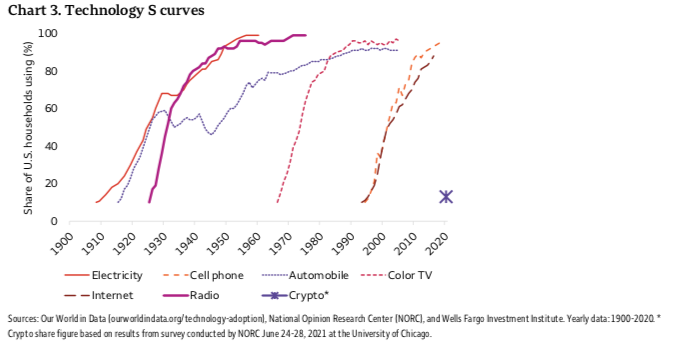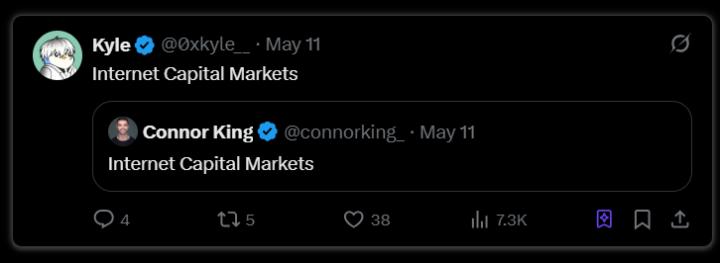Written by: Oliver, Mars Finance
We are at a moment of fragmentation in the crypto world. On one side, there is an unprecedented institutional fervor: Wall Street giants like BlackRock and Fidelity are embracing Bitcoin in an unprecedented manner, with their spot ETF products absorbing billions of dollars of traditional capital like pumps; sovereign wealth funds and national pension funds are also quietly incorporating crypto assets into their massive investment portfolios. This wave makes the narrative of "crypto becoming mainstream" sound incredibly real.
But on the other hand, for the general public, the crypto world seems further away than ever. Apart from price volatility and stories of a few speculators, it has almost no presence in daily life. The once-booming Non-Fungible Token market has fallen silent, and Web3 games that were once full of hope have failed to "break through". This huge temperature difference constitutes a core contradiction: on one side is a feast for financial elites, on the other, a distant spectacle for the mainstream world. How should we understand this disconnection?
It is against this background that Visa's top executives, including CEO Alfred F. Kelly Jr., have made a profound judgment on multiple occasions: cryptocurrency is at a stage similar to "early e-commerce in the 90s". Although not yet fully understood by the masses, its underlying technology and ecosystem are rapidly maturing, about to usher in a "super inflection point" of adoption. Research from institutions like Wells Fargo provides data support for this analogy. Research reports show that the user adoption curve of cryptocurrency is strikingly similar to the early internet in the 1990s. Even though the internet was born in 1983, until 1995, less than 1% of the global population was using it. This number is remarkably similar to today's crypto user percentage. History shows that disruptive technologies need to go through a long, slow, and confusing climbing period before their breakthrough.

However, this seemingly perfect analogy might mask a deeper truth. History is not simply repeating. The evolution script of today's crypto world is being completely rewritten by two variables unimaginable at the time - the entry of financial "regulars" and the rise of Artificial Intelligence (AI). This is not just a historical replay, but an accelerated and distinctly different evolution.
[The translation continues in the same professional and accurate manner for the rest of the text.]This issue itself may be limited by historical experience. Amazon's success was built on the Web 2.0 platform economic model - a centralized company that attracts massive users by providing excellent services, ultimately forming a winner-takes-all network effect. However, the spiritual core of the crypto world lies in "protocols" rather than "platforms". Its goal is to create an open, neutral, and permissionless public infrastructure like TCP/IP (the underlying communication protocol of the internet).
Therefore, the future winners may not be a closed commercial empire, but an open ecosystem or a widely adopted underlying standard. What we might see is a Layer 2 network (such as Arbitrum or Optimism) becoming the actual carrier for most applications due to its superior performance and developer ecosystem; or a cross-chain communication protocol (such as LayerZero or Axelar) becoming the "value router" connecting all blockchains; or a decentralized identity (DID) standard becoming a unified pass for all users to enter the digital world.
The winners of these "protocol" layers will have a business model entirely different from Amazon. They will not profit by charging high platform taxes, but by capturing the value of the entire ecosystem's growth through their native tokens. They are more like public utilities such as city roads and water supply systems, rather than a dominant supermarket.
Of course, this does not mean that the application layer has no opportunity. Great companies will still be born on top of these open protocols. But the key to their success will no longer be building closed moats, but how to better utilize these open protocols to create unique value for users.
Finally, returning to that quote: if you are willing to see the Visa CEO's judgment as a signal rather than a resolution, the more important question is "how do we turn the signal into practice". For enterprises, this is a comprehensive project from strategic alignment, compliance preparation to product implementation; for individual and institutional investors, it is about distinguishing between long-term perspectives and short-term fluctuations, neither blindly following nor passively avoiding, but seeking blockchain use cases that can create value in the real economy.
History has given us two things: first, a mirror that shows us possible trajectories; second, a lesson that reminds us that the ultimate winners are often not the fastest speculators, but those who establish lasting, real-demand infrastructure and platforms that can span cycles. Today's crypto is simultaneously writing two parts of a script - a bustling market short story and a slowly forming infrastructure long story. If what Visa says is true, the next decade will be the key decade for the latter to accelerate into the mainstream.







